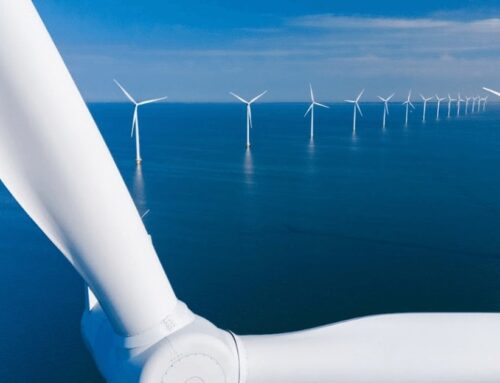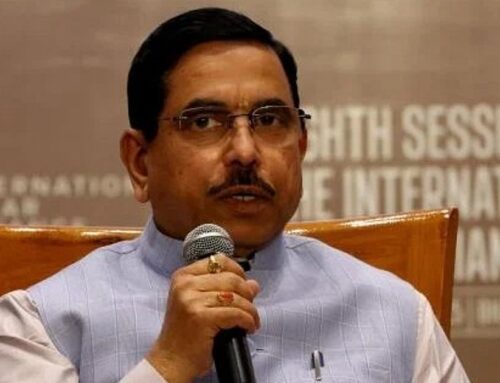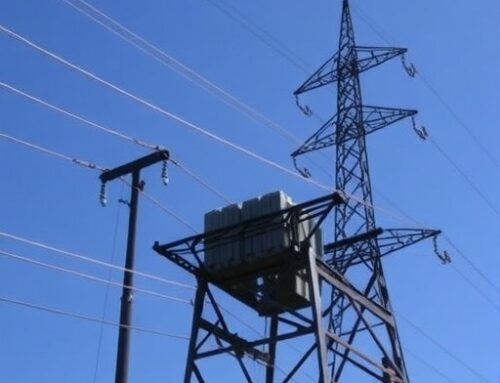Friction at MCE, Part 3: 100% renewable power still beyond reach
October 27, 2025

MCE Chief Executive Officer Dawn Weisz was upbeat as the July board of directors meeting began.
The nonprofit energy agency sold more than $1 billion in “green bonds,” she reported. Paying upfront for future power would save consumers $65 million. It closed on buying its San Rafael office building. It signed a geothermal contract to supply 15,000 homes.
“The great thing about geothermal renewable energy is that it helps us produce around the clock,” Weisz said. “It’s really valuable and helps us with our reliability goals.”
Delivering renewable energy all hours of the day is a big challenge for energy agencies like MCE, which became clear as the board meeting continued.
Staff presented a new “24/7” pilot program to deliver 100% renewable electricity around the clock to a few municipal accounts, such as a single fire station or office. The test program would only offer power from wind, solar, eligible hydroelectric, geothermal and biomass — tapping 1% of its energy supply.
The pilot would cost more than what MCE was now charging for “deep green,” its priciest plan, which has long been advertised as “100% renewable” by MCE.
About 100,000 MCE consumers, including every Marin municipality and 7,500 residences across Marin, have enrolled in the plan.
Larkspur Vice Mayor Stephanie Andre, a relative newcomer to MCE’s board who works in investment banking, was perplexed.
“What is the difference between deep green and this pilot program from a customer’s perspective?” she said. “Isn’t deep green already 100% renewable? Why would a customer want to pay more for essentially the same product?”
“It’s 100% renewable, but the accounting is aligned with the current reporting, which is done on an annual basis,” said Jonnie Kipyator, MCE power analytics manager. “You look at the customer’s annual usage in energy and match that with the annual cumulative generation for that.”
Andre paused for a moment to digest what he just said and restate it in simple terms.
“You’re saying there’s parts of the day when they’re not getting 100% renewable?” she said. “Is that what you’re saying?”
“Yes, that’s accurate,” Kipyator said.

The ‘bath tub’
For a quarter century, California has had the goal of transitioning to an energy system with fully greenhouse gas-free, predominantly renewable sources that do not contribute to climate change. But getting there is more easily said than done. There isn’t enough carbon-free renewable power on the grid, especially after 4 p.m., when demand rises and solar power fades.
The state uses an accounting system that encourages more renewable energy to be fed into California’s electricity supply. That system allows retail electricity providers like MCE to offer “100% renewable” energy plans. But that doesn’t mean that people who pay for cleaner electrons get that power when they turn on their lights.
“If you’re using power in the middle of the night, it’s not renewable,” said Ben Schwartz, policy director for Clean Coalition, a statewide renewable energy think tank. “I don’t care who your CCA is. It’s gas power. That’s just a fact.” CCA means community choice aggregation, the service offered by MCE.
The state defines renewable energy as electricity generated from wind, solar, small-scale hydroelectric, geothermal and biomass. With slight exceptions for geothermal and biomass, these sources do not produce climate-changing greenhouse gases. Coal, petroleum liquids and gas, in contrast, produce large amounts of greenhouse gases. Nuclear power and large hydropower do not produce greenhouse gases, but are not defined as renewable because of other environmental impacts.
The state is requiring retail electricity providers to have 60% renewable sources by 2030, which MCE has already surpassed, and 100% from greenhouse gas-free sources by 2045. Like its peers, MCE has a plan advertising “100 percent” renewable power. But what gets delivered on an hourly basis can be less pure, meaning deep green customers have bigger carbon footprints than they may think.
The reasons are twofold: the way California’s energy grid works, and how the state measures renewable energy.
The grid does not have much storage for renewable wind or solar power generated during the day. Instead, it is like a bath tub fed from multiple sources that is tapped as needed. State energy accounting rules allow agencies like MCE to monitor how much energy customers use on an annual basis and buy that amount of renewable energy — or a renewable attribute — and feed it into the grid on their behalf.
“When we’re talking about the bath tub, we’re saying we’re putting clean water in the bath tub for you, and you only need so much water in the bath tub,” Weisz said. “The customers are substantially contributing to reducing greenhouse gas emissions because there’s less room for dirty water in the bath tub.”
That formulation allows the energy suppliers to advertise they are selling 100% renewable power, even if what is delivered during peak demand periods — daily from 4 p.m. into the night — comes from whatever energy sources are feeding the grid. In California during peak demand, that is mainly power from gas and imports.
“It’s not just MCE,” Schwartz said of this accounting system that allows the energy nonprofits to advertise 100% renewable plans. “California has said if you can claim more renewable electrons than kilowatt hours of load you’re serving, you’re hitting your targets.”
However, starting in 2028, California’s retail energy suppliers will have to start reporting power content on an hourly basis. That shift, required by Senate Bill 1158, is what’s behind MCE’s pilot “24/7” program, where, among other things, MCE would have to create a system to track its customers’ energy sources — instead of just relying on PG&E to read its meters.
“We are doing what I would say is the smart thing,” Weisz said. “To start a pilot program where we can learn about how successful it is, how to procure that product, how to engage customers for that product, for a couple of years before we have to roll it out to everybody.”

The shift to hourly accounting might raise the eyebrows of many Californians who thought they were doing more to counter climate change — as it did with Andre.
But it also will reveal how much greenhouse-gas producing power is used and when, which could accelerate the transition toward a cleaner energy system.
Energy experts not affiliated with MCE — such as Dan Segedin of the Marin Conservation League, who has studied MCE’s power contracts — estimated the overall energy mix for MCE customers is between 70% and 80% power from greenhouse gas-free sources.
That figure includes paying for attributes, meaning renewable power produced elsewhere that’s delivered to the grid but not necessarily to MCE customers. Schwartz has heard slightly lower estimates at other nonprofit energy agencies.
MCE is reluctant to say what the current overall figure is, spokesperson Jenna Tenney said. “There is no standard way of accounting for that. So if MCE were to give numbers, they would be different from somebody else giving numbers, because the methodology can be whatever you want it to be right now.”
“So MCE hasn’t done those calculations because we know that we have to switch to that anyway,” she said. “We will be eventually provided with a framework by the state that everyone has to use.”
Until then, the advertising by MCE and other energy nonprofits that they are providing consumers with 100% renewable power bothers some MCE board members.
“It’s misleading to the consumer,” said Sally Wilkinson, Belvedere’s vice mayor, who has urged MCE to talk more about the transition to hourly accounting. “People who want to be really green don’t even know that they’re consuming natural gas and they might change their patterns of consumption.”
“The other part is it misprices the value of batteries and nuclear vis a vis solar,” she said. “Because once you go to hourly accounting, we’re going to have to start finding strategies to reduce greenhouse gas emissions. The solutions are batteries and nuclear if we want to get closer to a truly carbon-free California.”
For now, California has maintained a 1976 moratorium on new nuclear plants.
From a greenhouse gas producing perspective, the power content of base plans at MCE and PG&E have almost identical percentages of carbon-free energy. MCE is 100% carbon-free and PG&E is 98% carbon-free, according to the state.
From a supply perspective, PG&E relies on 63% nuclear power, according to the state’s 2024 power content label, while MCE relies on 69% renewable sources led by solar and wind, and 31% large hydroelectric.
Energy industry newsletters have noted there are very few energy buyers in the U.S. who now get 100% carbon-free energy around the clock.
Public education
Meanwhile, at recent MCE’s board and committee meetings, staff have downplayed concerns that deep green is not as pure as advertised.
“People are under the impression that the deep green product is 100% renewable all the time,” Andre said after the 24/7 pilot was introduced.
“It is widely known that deep green is 100% renewable and is on an annual basis,” replied Zae Perrin, MCE vice president of customer operations.
“I don’t believe it’s widely known,” said Barbara Coler, a Fairfax Town Council member and MCE’s longest-serving board member. “Most basic customers just say, hey, I’ll just have renewable all the time. … What happens when we have to start reporting on an hourly basis?”
Andre, Coler and Wilkinson were not the only MCE directors to worry about deep green’s purity or suggest MCE use more truthful advertising.
“Maybe deep green becomes ‘forest green,’” said Corte Madera Mayor Pat Ravasio at the meeting.
The MCE series
Part 1: At its 15-year mark, MCE faces growing questions about oversight and costs.
Part 2: Observers ask why MCE prices are rising when energy costs are falling.
Part 3: MCE says it provides 100% renewable energy, but is that really true?
Part 4: Attempts by critics to reform MCE’s practices meet stiff resistance.
RevContent Feed
Search
RECENT PRESS RELEASES
Related Post







